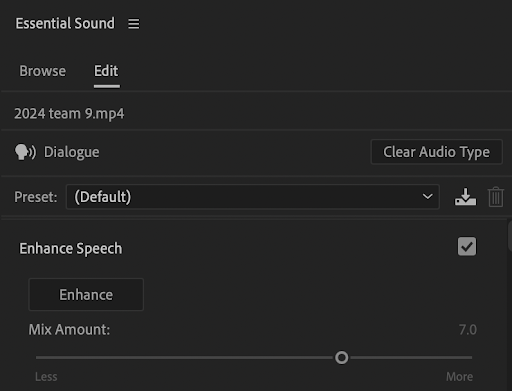the Biggest production of my live (part 2)
A part of my job that I rarely talk about but I really love is the opportunity to give tours of our facility. Students, community members, alumni, and more all come into our space to see what we have going on. A quick look at the newsroom then the “ooh”s and “ahhs of the control room and the mezmerization (yeah, I just made up a word!) of the studio - specifically the application of chromakey and virtual sets. I love showing off what we do but recently something that was said set me back.
I am new to the whole “engineer” label thing and the responsibilities that come with it. Our Chief Technical Officer brought a guest into the control room as we were preparing for a shoot and in his introduction of me to his guest we said “Tom designed our live stream plan for this weekend’s NPPA event.” I quickly thought “oh yeah. I design broadcasts now.” That was the first time I had that thought. I still catch myself saying I “produced” a show but really I am a designer.
The design of the NPPA Best Of Photojournalism (BOP) contest began with a simple meeting. Myself, Mark Johnson, our CTO, and Jim Black, the manager of the camera/equipment shop, met for about 45 minutes to get up to speed on what the NPPA wanted for the event. Prior to 2020, the event streamed two rooms. Then after 2020, the event was hosted solely via zoom. The 2023 event was the first time in three years that the judges and contests were held in person at the University of Georgia’s Grady College of Journalism.
The NPPA BOP event brings judges from all over the country to Athens, Georgia for the weekend. They are divided into 6 rooms by the category of content they are judging. There are over 90 divisions to be judged over the weekend and a collective of over 50,000 pieces of content.
The primary goal of the live stream was for the viewer to see the submission while hearing the panel of judges as they comment on the piece. Secondarily, the ability to see the panel as they deliberate was a desire.
A snapshot of the footage from the NPPA BOP Live Stream
The initial plan was simple. I would use a USB-C feed from the “driving” computer and put it in OBS as the base layer. We would set up a camera to show the judges and run an audio mixer for microphones. The output of the mixer would go to the camera. The feed from the judges camera would be a lower box in the corner as it was simply just to put some faces to the voices.
Simple enough… Just need a USB to HDMI adapter, two capture devices, two HDMI cables, and the camera, mics, mixer, and related cabling!
In order to pull off the plan, we only needed 12 capture devices and 12 HDMI cables. In the process of ordering the equipment, “that voice” told me to order at least three more of each. I have long learned to listen to that voice so I went with the purchase of 15 of the El Gato Cam Link 4k and HDMI cables.
When we got the gear, I opened a couple of the capture devices, set up OBS on a computer that we would use for the contest and started testing the set up. It worked as planned. I didn’t run mics, etc but I did set up the camera and computer and everything worked as “designed!” I was stoked.
I then honestly went into producer mode. I began working within OBS to create scenes for the broadcast. I created a “prestream” scene to run before we started each morning (your lesson there is to ALWAYS start your stream before your event!! ALWAYS!). The scene has a “we will start soon” graphic as well as a sound clip that is looped.
The next scene was the main scene. I used a cam link to bring in the screen from the main computer in the room (that fed the projector/sound for the judges) as the base layer. I then scaled the judges feed from the camera/2nd cam link to the bottom right corner. I hated the look…. I just looked amateur. It was missing something but I didn’t know what.
I slept on it a day or two and realized that the biggest missing piece was a graphic of some sort. I built lower thirds for the different contests. So I set out to create over 70 different lower thirds. That made all of the difference in the world! I was finally happy with the look and the plan.
One more meeting to tie up the loose ends. Everyone was happy and the plan was set in place. It was going to be a great event.
Check out the footage from the event here.
Make sure to look for part 3 of the series on March 8th.
Meet the Author, Tom White
Tom White is the Broadcast Engineer at Grady College of Journalism and Communication at the University of Georgia. Prior to that role, Tom taught at Morgan County High School and Rockdale Career Academy where he and his student produced thousands of live streams for sports, news, and community events. Tom’s program at the Rockdale Career Academy received the NFHS Network Program Of The Year in 2016 and his program at Morgan County High School received the New Program of the Year title in 2018.
Tom has been a long time contributor to many publications and is the host of Teaching to The Test Pattern Podcast.











As summer winds down, the familiar rhythm of a new school year approaches. For educators like James Peach, the weeks leading up to students' return aren't just about shuffling papers; they're a strategic dance of preparation, aiming to ignite inspiration and cultivate self-sufficiency.